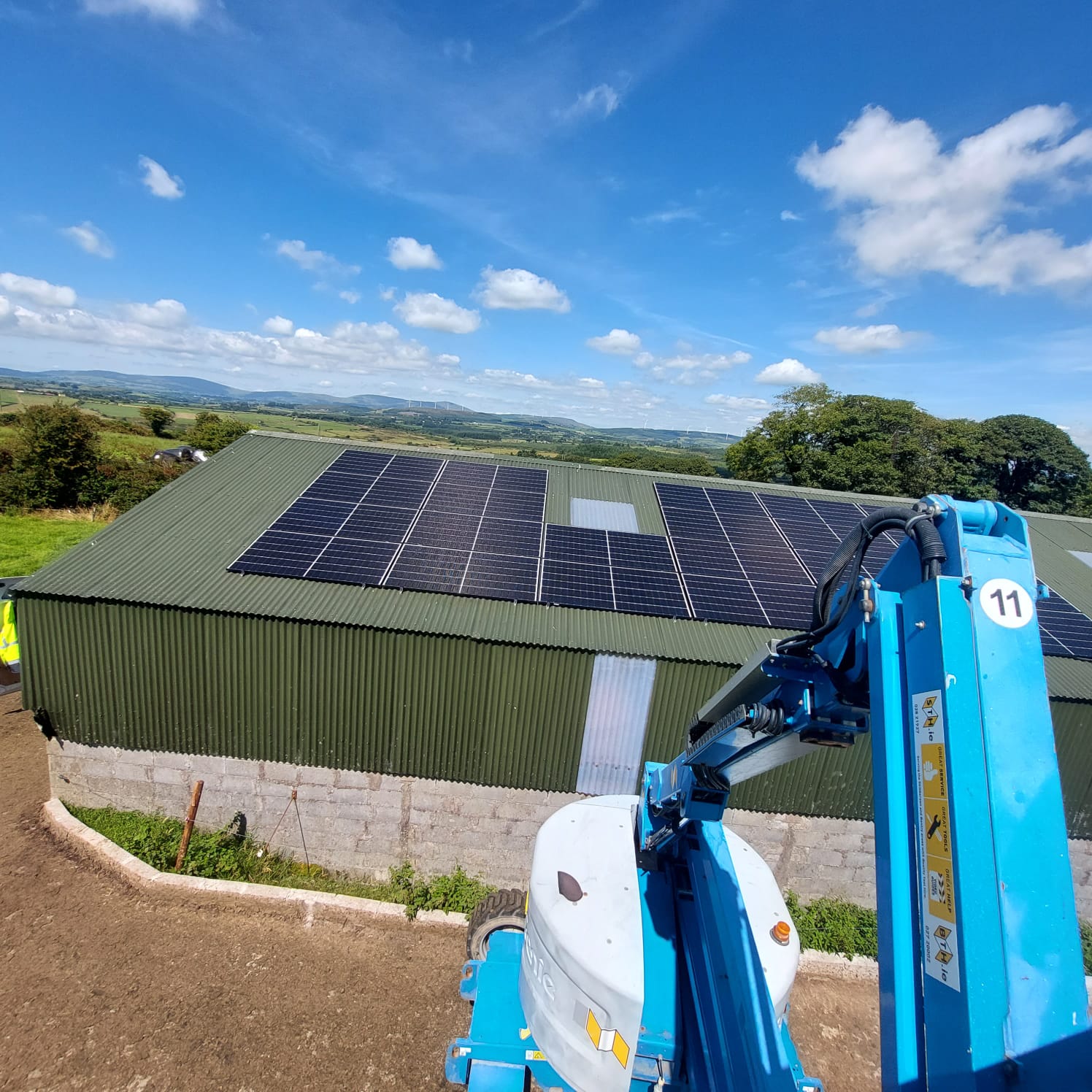Previous
5 BENEFITS OF COMMERCIAL SOLAR PANELS
May 19, 2022

A growing number of farms and agricultural businesses have started looking into Solar to power their daily operations. PV systems can range from small, roof-mounted or building integrated. Thanks to several governments backed incentives, this has been made a lot easier than before.
Solar PV systems on farms are used to reduce the costs of milk-cooling, vacuum pumps, and water heating. These three processes combined are extremely energy intensive. In the light of rising energy costs, the paybacks are now most compelling considering you can avail of the grants and the Microgeneration Scheme (which is supposed to commence in July).
Solar PV has become one of the most reliable forms of renewable energy. It is extremely cost-effective to self-generate energy for all your farm’s needs. Also, it can be customised for if you ever consider expanding further. Peak performance is from March to October which is ideal for diary, poultry, and pig farms.
– Significant reduction in energy costs
– Quick payback period
– Accelerated capital allowances, SEAI and TAMS Grants available
– Battery systems available to store excess
– Reduce your carbon emissions
– Microgeneration set to commence in July
– Being able to view the performance
– Surplus energy can be diverted to heat water and charge electric vehicles
– Solar PV has no moving parts, maintenance is low.
The cost of installing solar power depends on the size of the system needed for the output.
This can be determined by:
– The type of farm
– Electricity consumed
– Roof space available
– Budget
If you have a pig, poultry or robotic dairy farm, the energy usage is normally quite high, and the system size needed tends to be larger. However, solar power is modular, which means you can add to an existing system if energy demand requires it.
PV solar panels are a massive contemplation. Considering, you’ll be stuck with these panels for 25-30 years, you should do your research and find out the best on the market. For example, blue panels on the market are often referred to as polycrystalline which are made of silicon crystals and less efficient and more affordable. While monocrystalline panels have black cells made of single crystals, offering a higher efficiency at a higher price.
The installation normally includes the following:
– Design of the system
– Assistance securing grants
– ESB paperwork ensuring we conform with regulation
The panels, inverters, batteries, smart meters including installation
Payback period on a solar energy system usually depends on the size of the farm and the structure installed, but it can range from 3.4 – 8.5 years according to Farmers Journal (Robb, 2021). Then, you will have free-generated energy for many years to come! Click here to read the case study on Ticey Allen who farms in Tipperary and decided to opt for a Solar PV system to support his dairy farm.
The generation of solar in Ireland is very good. PV panels continue to generate energy as long as there is daylight. Peak generation usually occurs in the summer months, while the lowest generation is during the Winter months.
Reading List
De Vynck, D (2022) ‘The ins-and-outs of solar PV on Irish Farms’. Thatsfarming.com Read full article here: https://thatsfarming.com/farming-news/solar-energy-on-farms/ Date accessed: 10/05/2022
Robb, S (2021) ‘Now is the time to consider solar PV’. Irish Farmers Journal Read full article here: https://www.farmersjournal.ie/now-is-the-time-to-consider-solar-pv-632611#:~:text=The%20payback%20period%20ranges%20from,future%20support%20under%20the%20MSS. Date accessed: 10/05/2022